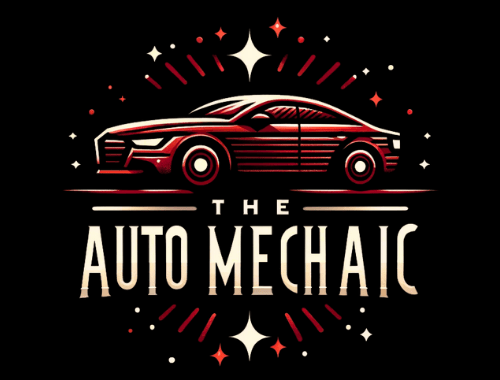What is an Exhaust Pipe?
An exhaust system comprises multiple parts. One such part is the exhaust pipe, situated towards the car’s rear end. Its function is to emit gases from your car into the air. Noxious fumes are made less toxic and passed from the catalytic converter to the muffler, where unwanted sound waves are destroyed. The remains are released through the exhaust pipe.
Multiple factors can damage the exhaust pipe, which one should know before learning how to fix exhaust pipes without welding. These factors include rusting, collisions from the rear end, broken hangers, and broken seals.
How does the Exhaust System work?
An exhaust system contains an exhaust manifold, catalytic converter, resonator, and muffler connected to a tailpipe. Together, these parts make the exhaust system work.
Exhaust Manifold
Exhaust gases are sent to the exhaust manifold through the exhaust valve. Sound waves are generated at the end of the exhaust stroke and sent to the exhaust manifold, which passes them through a pipe to the catalytic converter.
Catalytic Converter
A catalytic converter has two ceramic blocks. The first block is made of Platinum and Rhodium, while the second is made of Platinum and Palladium.
“Both these ceramic blocks work as catalysts and make the toxic gases less harmful. Moreover, these less toxic gases contain a mixture of nitrogen, carbon dioxide, and water vapors.”
Muffler
The gases are less harmful, but the sound waves still prevail. Besides, the muffler contains chambers of various sizes that destroy sound waves. These chambers are made for sound waves of various intensities. Due to chamber walls, the sound waves collide with one another, and as a result, the chamber walls cause friction. Ultimately, sound waves are destroyed and released through the tailpipe.
Signs Your Car Needs Exhaust Repair
A car comprises multiple spare parts assembled and integrated to function accurately. Even if one part is damaged, it can also damage other components. Below are signs that your car needs exhaust repair.
- Noisy Engine & Exhaust System — If your car is making weird rattling or hissing noises, it might be a sign that it needs an exhaust repair. An overly noisy engine can also indicate a fault in the exhaust manifold. When you accelerate or start the vehicle, the sound can be louder. Thus, it is better to check it and take prompt action.
- Decreased Fuel Efficiency — The exhaust system works with the engine to regulate fuel usage. If your exhaust system is damaged, the engine must work harder to function normally. Because the exhaust system is damaged, the toxic gases are not appropriately released from the car, making the engine even hotter. As a result, more fuel is burned. Due to this, you will have to incur hefty fuel expenses.
- Low Performance — The car’s overall performance also dwindles, along with decreased fuel efficiency. The vehicle’s power and acceleration will both be reduced. This can usually be because of an issue in the catalytic converter or an exhaust leak. Also, you will not get the same speed and prompt response as before. Moreover, if the issue is not fixed promptly, it exacerbates it.
- Unfamiliar Vibrations — Another sign that your exhaust needs repair is feeling unknown vibrations through the car seat, steering wheel, or gas pedal. The main reason behind these vibrations could be rust or a leak in the exhaust pipe. If you know how to fix exhaust pipes without welding, you can repair the car without needing a technician.
- Burning Smell — A burning smell from your automobile is a warning sign and should not be ignored. Since there can be a leak in the exhaust system, exhaust gases high in temperature can cause wiring or other parts to burn as they are made of plastic. Sometimes, the burning smell is even accompanied by smoke, but you should not be waiting for it. You should turn off the engine and get out of the car. Avoid driving the vehicle until the exhaust system is repaired, as it can otherwise be dangerous.
- Engine Light — Some cars, like the Toyota Tacoma, have an engine light that indicates an engine check. This light will turn on whenever something is wrong with the exhaust system or the engine. Whenever you see it on, you should get your car checked. However, this may not be the case with all vehicles; hence, you should also pay attention to other signs. If you know how to fix an exhaust pipe without welding, check the car regularly.
- Gas Smell — Another sign of exhaust damage is starting to get the gas smell. As an exhaust leak occurs, toxic fumes can even enter the car. These gases, such as carbon monoxide, hydrocarbons, sulfur dioxide, and nitrogen oxides, are poisonous; inhaling these gases can pass out or be fatal. Thus, get your car checked immediately.
Equipment Required to Fix Exhaust Pipe
To fix the exhaust pipe without welding, you must find, examine, and fix the problem caused. For this, you will require some tools and equipment. Ensure that you fix the problem safely. The tools mentioned below are needed to fix an exhaust pipe.
- Sandpaper
- Exhaust putty
- Epoxy
- Car Jack
- Exhaust Clamps
- Exhaust Tape
- Screwdriver
- Nitrile coated gloves
How to Fix Exhaust Pipe without Welding?
Now that you know how the exhaust system works and the common signs that you need to repair the exhaust system, let us learn how to fix exhaust pipe without welding.
Step 1: Identify the Problem
The first step is to find out what the problem is. Check whether there is a small or large hole. If you cannot find the hole or leak, feel the breeze by moving your hand along the exhaust pipe. Ensure to do it safely, as the exhaust pipe can become much hotter.
Another way to identify the leak is to use a shop vac, which is put on the tailpipe and pulls air into the system. Spray soapy water along the exhaust pipe underneath the vehicle. This will highlight the area escaping the air. Following this method, you do not need to turn the car on.
Step 2: Check if the Damage is Inside or Outside.
Sometimes, the exhaust can break from inside or outside, even in an odd shape. Depending on the type of problem, you will need to fix it accordingly.
Step 3: Fixing the Problem
There are multiple ways to fix the problem, depending on the type of issue.
- Using Epoxy— If you want to fix an exhaust pipe without welding, epoxy is an excellent method. Hence, it is essential to apply it carefully; otherwise, it can damage the pipe surface. Furthermore, it is effortless to use and saves a lot of time.
- Using Exhaust Tape— If you have budget restrictions or want an affordable alternative to fixing the exhaust pipe without welding, you can use exhaust tape. It is straightforward to use. You need to cut the tape and place it on the exhaust pipe according to the damage. Apply some epoxy and add pressure to ensure that the tape sticks to its place.
- Using Aluminum Foil Shield— You will need an aluminum foil shield for the broken exhaust pipe. To use this, first, measure the damage and use the aluminum foil as per the dimensions. Then, using this foil, cover the portion of the broken pipe. This is also an affordable option to fix the exhaust pipe without welding.
Dangers of Not Repairing Exhaust Pipe
“Repairing the car on time is vital because delaying will only exacerbate the hazardous consequences.”
Mentioned below are some dangers that can happen if you do not repair the exhaust system in a timely manner:
- Damage to other parts of your car—Since many parts of the car installed underneath are plastic, they can be burned. Also, some wiring below can get caught up in the heat and burn. This happens because a leak in the exhaust traps the gases in the system, which can overheat the engine, causing damage to other parts.
- Toxic fumes—As mentioned above, our automobiles emit harmful gases like carbon monoxide and hydrocarbons. If these gases enter the car because of a leak, they can cause loss of consciousness or even prove deadly.
- Performance Issues—The engine must work harder when the exhaust system is not working optimally. As a result, its performance is also reduced to a great extent. Also, it requires more fuel than usual and does not perform as it used to. You can learn how to fix exhaust pipes without welding and resolve the issue independently.
- Increased Repair Bills—There is no use in delaying the repair to prevent expenses. The more you delay, the higher the costs you must pay. A fault in the exhaust system can cause performance issues, low fuel economy, decreased performance, etc. Furthermore, this will only add to the expenses. Also, if your car makes noisy sounds, you are more likely to catch the attention of authorities and pay a hefty penalty.
- Environmental Damage—One of the serious threats the world faces today is environmental damage. Poisonous gases emitted from vehicles increase temperature and carbon dioxide levels, thus causing global warming. A sound exhaust system makes these gases less toxic and then releases them. However, there is a need for a more sustainable solution. Therefore, stress should be laid on using energy-efficient vehicles to eliminate this threat.
Frequently Asked Questions (FAQs)
With an exhaust leak, how long can I drive?
How long one can drive with an exhaust leak depends on factors such as whether the exhaust pipe has small or large holes, what type of vehicle it is, and similar factors. Hence, fixing the exhaust pipe as soon as possible is imperative because it can lead to severe repercussions.
What are the reasons that cause exhaust leaks?
Generally, exhaust gases are released from the tailpipe of the exhaust system. In the case of an exhaust leak, the gases are produced because gasoline and air combustion cause acidic moisture, which further causes parts to break from the inside out. So, these gases start to leak before they exit the exhaust system through the tailpipe.
How much time is needed to repair the exhaust pipe?
The amount of time needed to repair the exhaust pipe depends on the size and nature of the problem. Fixing an exhaust pipe can take up to 2 or 3 hours. Also, the repair expenses entirely depend on your car type and whether you are getting it repaired by a local mechanic or your dealership. You can also learn to fix exhaust pipes without welding and repair the vehicle.
Conclusion
“The car’s exhaust system ensures that the car’s performance and fuel efficiency are up to the mark.”
However, several reasons, such as rust, leaks, broken hangers, etc., can cause issues that can worsen if timely actions are not taken. Now, you must have a fair idea of identifying the leaks and fixing the exhaust pipe without welding. Hence, repairing epoxy, exhaust tape, or aluminum foil shields is easy and can be fixed. Ensure that you repair the exhaust safely.

Bruce William is a professional content writer and vehicle engineer with extensive car maintenance and repair knowledge. His expertise spans all vehicle parts, offering practical solutions for various automotive issues. Bruce provides valuable insights through his website articles to help readers maintain their cars for optimal performance and longevity.

